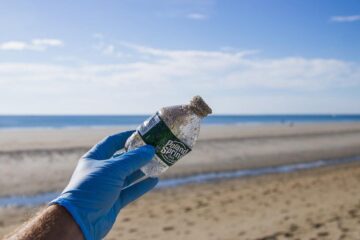Water is a necessity for survival and it’s important to be prepared in case of an emergency. Storing water long term can help ensure that you have enough available when the time comes. Knowing how to store water long term safely and effectively will give you peace of mind knowing that your family has access to clean, safe drinking water should there ever be an emergency situation.
In this blog post we’ll cover the benefits of storing water long term, different types of containers used for storage, best practices for maintenance, and common mistakes people make while trying to store their own supply of potable water over extended periods of time. Read on if you’re looking for more information about how to successfully store your own supply or simply want advice on getting started with stocking up!
Benefits of Long-Term Water Storage
Storing water for long-term use can be a great way to ensure that you and your family are prepared in the event of an emergency. Having access to clean, safe drinking water is essential for survival, so having a supply on hand is critical. Not only does it provide peace of mind, but there are also other benefits such as cost savings, convenience, and health and safety.
Emergency Preparedness: In the event of natural disasters or other emergencies that disrupt public utilities like power outages or contaminated water supplies, having access to stored potable water can make all the difference in keeping your family safe. Storing enough clean drinking water ahead of time can help you avoid relying on potentially dangerous sources during times of crisis.
Cost Savings: Purchasing bottled water may seem like an easy solution when stocking up on emergency supplies; however, buying large containers or tanks for long-term storage will save money over time since they hold more liquid than individual bottles do. Additionally, if you’re able to collect rainwater from your roof with barrels or cisterns then this could provide free potable water which would reduce costs even further.
Convenience: It’s much easier to store large amounts of liquid in one container rather than multiple smaller ones; this makes transporting them simpler too. Furthermore, many types of containers come with spigots which allow for easy dispensing without having to pour out each bottle individually every time you need some fresh drinking water – this saves both time and effort.
Stored tap or spring waters should be tested regularly for bacteria growth since these organisms can multiply quickly in warm temperatures without proper maintenance, especially if they haven’t been treated with disinfectants beforehand such as chlorine. Additionally, using food grade plastic containers ensures that no toxins leach into the stored liquids due to contact between different materials like metal cans; this helps keep everyone healthy by providing safe drinking options during emergencies where resources may be limited otherwise.
Storing water for long-term use can be an invaluable resource in the event of a disaster or emergency, as well as providing cost savings and convenience. It is important to understand the different types of containers available to store your water safely.
Types of Long-Term Water Storage Containers
When it comes to long-term water storage, there are a variety of containers available for use. From bottles and drums to rain barrels and cisterns, each type has its own advantages and disadvantages.
Bottled Water Containers: Bottled water containers are one of the most common types of long-term water storage containers. They come in various sizes ranging from 1 gallon jugs up to 5 gallon carboys or larger tanks. These containers can be used for both short-term emergency situations as well as longer term needs such as camping trips or bug out bags. The main advantage is that they are lightweight and easy to transport when full, however they do require frequent replacement due to their limited lifespan.
55 Gallon Drums: 55 gallon drums are another popular option for long-term water storage needs. They provide a large capacity container which makes them ideal for storing large amounts of drinking water over an extended period of time without having to frequently replace them like with bottled water containers. However, these drums can be difficult to move when full due to their weight so it’s important that you have adequate space set aside before filling them up with your stored supply of drinking water.
Rain barrels and cisterns offer an alternative way of collecting rainwater which can then be used for non-potable purposes such as watering plants or flushing toilets during periods where municipal supplies may not be available due to drought conditions or other emergencies. While this method does require some additional equipment such as gutters, downspouts, filters etc., it also offers the potential benefit of reducing your overall reliance on public utilities while at the same time helping conserve precious resources by reusing otherwise wasted runoff from roofs or other surfaces instead of letting it run off into sewers or waterways untreated.
Having the right type of water storage container is key to storing water long term safely and effectively. In the next section, we’ll look at how to store water long term properly.
How to Store Water Long Term Safely and Effectively
To do so safely and effectively, there are several steps to follow.
Cleaning and Sanitizing Containers: Before storing any water in a container, it must be cleaned thoroughly with soap or detergent. This will remove dirt, debris, bacteria, or other contaminants that may have accumulated on the surface. After cleaning the container should be sanitized by rinsing it with a solution of 1 teaspoon of unscented liquid chlorine bleach per gallon of water used for rinsing. Allow the solution to remain in contact with the surfaces for at least two minutes before draining off completely.
Storing in a Cool Dark Place: Once containers are properly cleaned and sanitized they should be stored in a cool dark place away from direct sunlight as this could cause algae growth which would contaminate the water over time. The temperature should also remain consistent if possible as extreme temperatures can cause plastic containers to degrade more quickly than normal leading to leaks or contamination issues down the road.
In addition to cleaning and sanitizing containers prior to storage, adding disinfectants such as chlorine bleach or purification tablets like iodine can further reduce the risk of bacterial contamination during long-term storage periods when temperatures cannot be maintained consistently low enough to prevent growth naturally over time.
Finally, it is important not only to store clean containers but also to rotate stock regularly; meaning replacing old stored supplies with new ones every 6 months or so depending on how often you plan on using them. This helps ensure that all stored supplies are fresh, safe, free from contaminants and ready for use when needed most.
Properly storing water long-term is essential for emergency preparedness. To ensure safe and effective storage, it is important to clean and sanitize containers, store in a cool dark place, add disinfectants or purification tablets, and rotate stock regularly. The next section will discuss best practices for maintaining your long-term water storage.
Best Practices for Long-Term Water Storage Maintenance
It is important to maintain long-term water storage containers in order to ensure that the stored water remains safe and usable. Here are some best practices for maintaining your long-term water storage containers:
Inspecting Containers for Leaks or Damage: Inspecting your containers regularly is essential in ensuring that they remain free of leaks or damage. Check all connections, seals, and valves on a regular basis for any signs of wear or tear. If you find any cracks, tears, holes, or other damage to the container itself then it should be replaced immediately as it could lead to contamination of the stored water.
Testing for Bacteria or Algae Growth: It’s also important to test the stored water periodically for bacteria and algae growth which can occur over time if not properly maintained. You can use commercially available testing kits from most hardware stores which will allow you to quickly check if there are any contaminants present in the stored water.
Replacing Old Containers with New Ones: Over time plastic containers may start breaking down due to exposure from sunlight and heat so it’s important to replace them every few years with new ones in order keep your supply fresh and uncontaminated. Be sure that all new containers are thoroughly cleaned before use as well.
Keeping track of how much stored water you have at any given time is essential when planning ahead during an emergency situation, so make sure you always know exactly how much inventory you have on hand by keeping records up-to-date at all times. This way, if something unexpected happens such as a natural disaster, then you will be prepared with enough supplies until help arrives.
It is essential to follow best practices for long-term water storage maintenance in order to ensure the safety and quality of your stored water. In the next section, we will cover some common mistakes to avoid when storing water long term.
5 . Common Mistakes to Avoid When Storing Water Long Term
It’s important to understand these mistakes so you can avoid them and ensure your stored water is safe for use.
Not Cleaning or Sanitizing Containers Properly: One of the most important steps in storing water long term is cleaning and sanitizing the containers before filling them with fresh water. This helps remove any dirt, debris, or bacteria that may be present on the container walls. If this step is skipped, contaminants could end up in your stored water supply. Make sure all containers are thoroughly cleaned with soap and hot water before being filled with fresh drinking water.
Not Rotating Stock Regularly: Another mistake people make when storing their own drinking water is not rotating stock regularly enough. Stored tap or bottled waters should be rotated every six months at a minimum to prevent bacterial growth from occurring due to prolonged exposure to air and light sources such as sunlight or fluorescent bulbs. Be sure to mark each container with an expiration date so you know when it needs replacing.
Not Checking for Leaks or Damage: When checking your stored drinking supplies, look out for any signs of leaks or damage that may have occurred over time due to wear and tear from handling or environmental factors like extreme temperatures fluctuations etc.. If a leak has occurred then replace the damaged container immediately as contaminated liquid could seep into other nearby containers if left unchecked.
Lastly, don’t forget to test your stored liquids periodically for bacteria and algae growth. Bacteria can occur naturally over time even if proper sanitation measures were taken initially during preparation stages. Algae tends to happen more often in warm climates where humidity levels are high. Both of these issues need addressing quickly, otherwise they will contaminate entire batches of stored liquid leaving you without access clean drinking supplies until new ones arrive.
By following these tips, you will be able to avoid making common mistakes while storing drinkable liquids long term, ensuring safety and quality control throughout the process.
FAQs in Relation to How to Store Water Long Term
How can you preserve water for 5 years?
Water is essential for survival and can be preserved for up to 5 years with proper storage. To ensure the water remains safe, it should be stored in a clean, airtight container such as glass or plastic jugs. The containers should also be kept away from direct sunlight and extreme temperatures. Additionally, adding a few drops of chlorine bleach per gallon of water will help keep bacteria at bay. Finally, check your stored water periodically to make sure it has not gone bad and replace any that has been contaminated. With these simple steps you can preserve your drinking water for up to 5 years.
How do you treat water for long-term storage?
Water is essential for survival, so it’s important to store it properly. To treat water for long-term storage, you can use a combination of filtration and chemical disinfection. Filtration removes particulates from the water, while chemical disinfection kills bacteria and other microorganisms. Common methods include boiling or chlorination with bleach or iodine tablets. It’s also important to keep stored water in clean containers that are tightly sealed to prevent contamination from outside sources. With proper treatment and storage techniques, you can ensure your emergency supply of drinking water remains safe for months or even years.
How long can drinking water be stored?
The shelf life of drinking water depends on the quality and storage conditions. Generally, if stored in a clean, sealed container at room temperature or cooler, it can last up to 6 months. However, if stored in direct sunlight or warmer temperatures, it should be used within 1 month. If possible, store your drinking water in a cool dark place such as a basement or pantry to ensure its freshness and safety for longer periods of time. Additionally, always check the expiration date on any bottled water you purchase before consuming it.
How much bleach do I need to store 55 gallons of water?
It is recommended to use 1/8 teaspoon of bleach per gallon of water when storing for long-term emergency preparedness. Therefore, you would need approximately 6 3/4 teaspoons (or 34.5 mL) of bleach to store 55 gallons of water. It is important to note that this amount may vary depending on the type and concentration of the bleach used, so it is best to check with the manufacturer’s instructions before adding any chemicals into your stored water supply. Additionally, it is important to remember that bleach will lose its potency over time and should be replaced every 6 months.
Conclusion
Having a reliable source of clean water is essential for any outdoorsman, prepper, or hunter. Long-term water storage can provide you with the security and peace of mind that comes from knowing your family will have access to safe drinking water in an emergency situation. With proper maintenance and care, you can ensure that your long-term stored water remains safe and drinkable for years to come. By following the best practices outlined in this article when it comes to storing water long term, you can rest assured that your family will be well prepared should an emergency arise.


